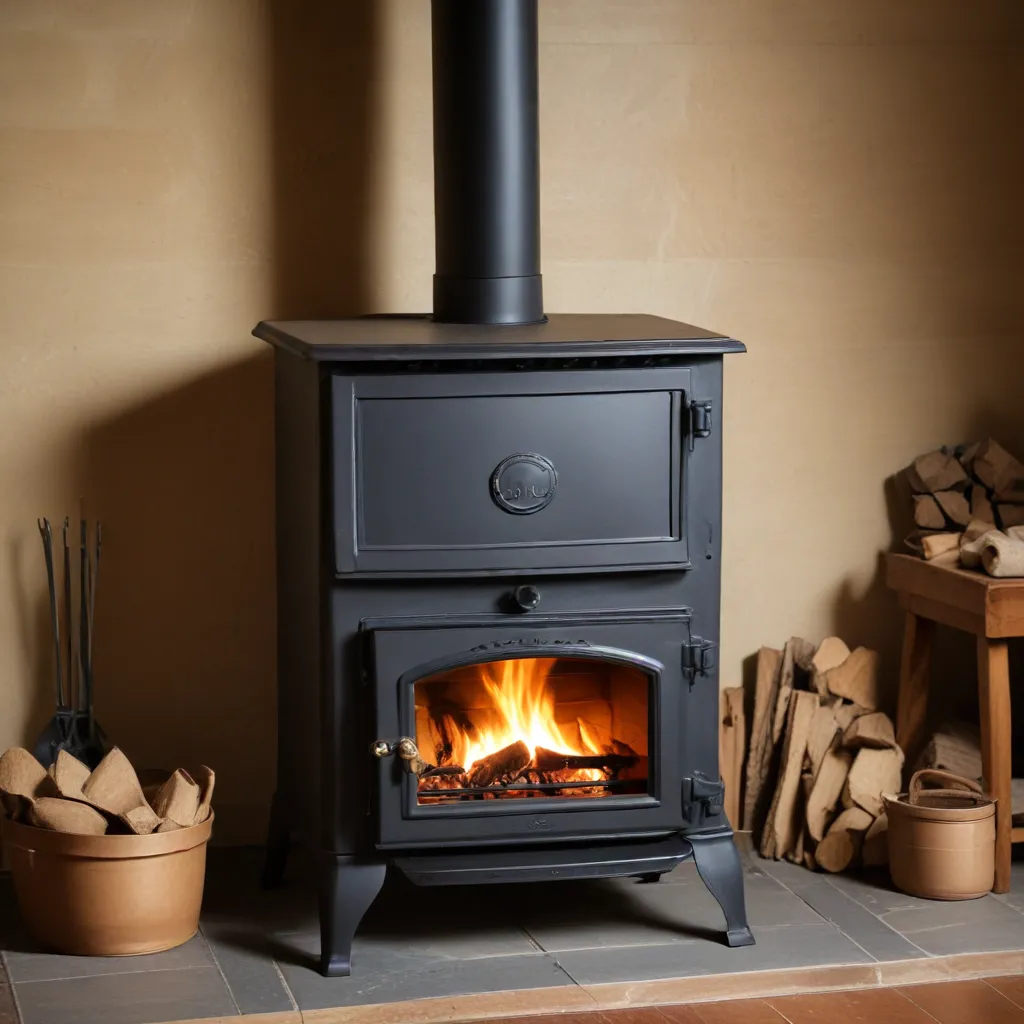
Mastering Wood Stove Safety: Essential Tips for Cozy and Secure Homes
As a seasoned expert in wood stoves and heating solutions, I understand the joy and comfort a crackling fire can bring to a home. However, with the warmth and ambiance also come important safety considerations that every family must prioritize. In this comprehensive guide, we will explore the critical precautions necessary to ensure your home and loved ones remain protected when using a wood stove or fireplace.
Maintaining a Healthy Chimney: The Foundation of Wood Stove Safety
The most common cause of chimney fires is the buildup of creosote, a tar-like substance that accumulates inside the flue. Neglecting regular chimney inspections and cleanings can lead to dangerous blockages and heighten the risk of a fire. To prevent this, it is recommended to have your chimney professionally inspected and cleaned at least once a year, or after approximately every 80 fires.
During the inspection, the professional can not only clear any obstructions but also provide guidance on the overall condition of your chimney. They can identify potential issues, such as cracks or deterioration, and recommend necessary repairs to maintain structural integrity and safety. Additionally, they can demonstrate how to perform basic visual checks in between professional servicing, empowering you to monitor your chimney’s health regularly.
Choosing the Right Firewood: Optimizing Efficiency and Reducing Risks
The type and quality of firewood you use can have a significant impact on the efficiency and safety of your wood stove. Hardwoods like maple, beech, ash, hickory, or oak are generally considered the best options. These woods burn cleaner, produce less smoke and creosote buildup, and provide more consistent heat output compared to softer woods.
Equally important is ensuring your firewood is properly seasoned. Seasoned wood, which has been cut, split, and air-dried for at least a year, burns more efficiently and generates less creosote. You can identify seasoned wood by its darker color, cracked ends, and a hollow sound when two pieces are struck together. Storing your firewood in a dry, protected area, such as a shed or under a tarp, will further enhance its quality and readiness for use.
Ash Disposal: Preventing Accidental Fires
Even after a fire has been extinguished, the ashes in your wood stove or fireplace can remain hot and flammable for up to three days. Proper ash disposal is crucial to avoid any risk of starting a fire. When it’s time to clean out the ashes, use a metal, fire-proof shovel and bucket to transfer them to a safe location, away from any flammable materials.
It’s generally recommended to leave approximately one inch of ashes in the bottom of the stove or fireplace, as this layer can serve as insulation, helping to heat coals faster and retain heat better for your next fire. During the warmer months, when the fireplace is not in use, you can then completely clean out the ashes.
Never use a vacuum to clean up ashes, as there may be hidden live coals that could ignite the dry dirt and dust in the vacuum bag or receptacle. Always opt for manual, fire-safe methods when removing ashes from your wood-burning appliances.
Safeguarding Your Home: Protective Measures and Equipment
In addition to maintaining your chimney and wood stove, there are several other precautions you can take to enhance the safety of your home:
-
Smoke Detectors and Carbon Monoxide Alarms: Regularly test all smoke detectors and carbon monoxide alarms in your home, and replace the batteries as needed. Integrating these safety devices into your home’s maintenance routine can provide an early warning system in the event of a fire or carbon monoxide buildup.
-
Fireproof Tools and Protective Gear: Ensure you have the appropriate metal and non-flammable tools for building, stoking, and adding wood to your fire. Additionally, wearing protective gloves while using your wood stove or fireplace can help prevent burns and keep your hands safe.
-
Hearth Protection: Utilize a fire screen or secure the door of your wood stove to prevent sparks from escaping and potentially igniting nearby flammable materials. Consider investing in a fire-proof mat or hearth pad to further protect your floors.
-
Chimney Caps and Screens: Installing a chimney cap can prevent debris, animals, and other obstructions from entering and potentially blocking your flue. Chimney screens can also help contain any errant sparks or embers, reducing the risk of a fire.
By incorporating these essential safety measures, you can enjoy the cozy ambiance of your wood stove or fireplace while prioritizing the protection of your home and loved ones.
Embracing Sustainable Heating Solutions
As we continue to navigate the challenges of energy efficiency and environmental responsibility, wood stoves can offer a sustainable heating option for many families. When used in conjunction with proper safety precautions and high-quality, seasoned firewood, wood stoves can provide a reliable and eco-friendly source of heat.
Beyond traditional wood stoves, there are also innovative heating solutions, such as high-efficiency wood furnaces and pellet stoves, that can further enhance energy savings and reduce environmental impact. Exploring these alternative options may be worth considering as you plan for your home’s heating needs.
Regardless of the specific wood-burning appliance you choose, the key to maintaining a safe and comfortable home lies in diligent maintenance, prudent fuel selection, and a proactive approach to fire prevention. By following the guidelines outlined in this article, you can confidently embrace the warmth and ambiance of a wood stove or fireplace while ensuring the security of your family and property.
For more information on wood stove safety, energy-efficient heating solutions, and other home comfort topics, be sure to visit woodstoveheaters.com. Our team of experts is dedicated to providing reliable and up-to-date guidance to help you create a cozy, secure, and sustainable living environment.


